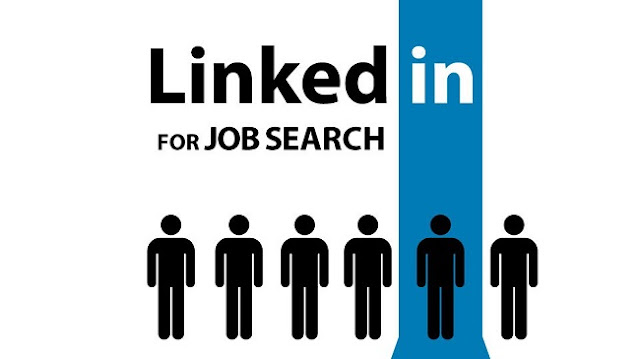How to Use LinkedIn to Find Your Best Job
How to Use LinkedIn to Find Your Best Job: Things
being what they are, you need a new job? In case you're similar to more than
450 million others in the world, will swing to LinkedIn to give your fingers a
chance to do the truly difficult work of finding a new position. I ought to
know—I've been there, done that.
Yet,
here's something I learned just as of late: More and more businesses are
utilizing LinkedIn as either their essential or by and large elite, job-posting
site — which implies you must figure out how to play the LinkedIn game.
Job description
Teddy
Burriss, social media strategist and LinkedIn mentor and coach, says the
principal thing to do is ensure the job you're looking for is in your
wheelhouse, signifying, "that it's exceptionally pertinent to your
identity and what you do." If you're a clerical specialist, for instance,
it's out and out silly to apply for a hazard administration assistant.
"You're simply shooting at circumstances," Burriss says with a snappy
chuckle, "squandering a procuring chief's chance and discoloring your own
reputation."
Number
two: Your profile must exhibit that you are "relevant" to the
position — it needs to demonstrate the enrollment specialist or enlisting
administrator that you have the imperative abilities, ability, and experience
for this specific job. How would you do that? That takes us to Burriss' next
suggestion: Your profile must utilize the watchwords applicable to the position
you need. Before you apply for positions heat those words into your profile.[To add your skills to your profile, follow this guide on LinkedIn.]
Keywords
Indeed,
that sounds simple peasy, correct? One moment. "Keywords are not judgment
skills," Burriss concedes, in light of the fact that contracting directors
are regularly peculiar in the dialect they use to portray a position. What you
should do, he direction is study each job depiction and utilize the words it
utilizes as a part of your profile and résumé.
Trudy
Steinfeld, relate VP and official chief of NYU's Wasserman Center for Career
Development, likewise focuses on the significance of utilizing the correct
Keywords, since that is the means by which "candidate following frameworks
and LinkedIn work. You need to utilize those identical words to beat it."
Burriss'
third proposal is the most interesting — and I really believe it's the well on
the way to help you succeed: Even if a position is important to your expertise
set and sounds ideal for you, don't simply apply for it higgledy-piggledy.
Burriss demands that you initially need to assemble an association with people
in the organizations where you need to work. Without a doubt, it appears
somewhat old-school, yet even in our innovative world, you should organize.
Groups and influencers
While
you are on LinkedIn, however before you start your job look, begin a business
discussion—not a job discussion—that shows off your smarts. NYU's Steinfeld
prescribes joining relevant groups and taking after individuals on LinkedIn who
are associated with your profession interests. This will permit you to remark
on important themes out in the open gatherings, which may get you the consideration
from supposed "influencers" that you're chasing.
To
join a professional group Burriss revealed to me that a high number of jobs are
what he calls "shrouded" ones—they're not freely posted. On the off
chance that you've built up various relationships after some time with the
perfect individuals, they will come to you with these job openings. How
extraordinary—and what a trap – is that! Require help finding a professional
group?
Your profile
Steinfeld
has some different traps up her sleeve. Ensure your profile's headline
"mirrors the job you're chasing, not the job you as of now have."
(That's the greatest misstep job candidates make, she let me know.) She
likewise encourages candidates to expand the force of LinkedIn by joining their
school page, previous business pages, or expert/exchange affiliations. Stay
aware of your associations notwithstanding when not looking for another
position, she asks, which will make it simpler for you to request presentations
when the time comes. More than anything, Steinfeld focused on the significance
of having an association with somebody inside the association where you need to
work.[To update your profile, check out these instructions on LinkedIn.]
Photo, location, college
Here
are two more tips, this time from Matthew Schwab, who writes about profession
management. Ensure you have an awesome expert profile photograph (which means
it's not liable to be a similar one you use on Facebook or Snapchat). He
suggests paying an expert picture taker, who will make you resemble, yes, an
expert. Similarly, as on dating destinations, profile photographs ought to be
close to five years of age. At long last, in case you're looking for a job in
another geographic zone, refresh your area in your profile before you apply.
Else, you're probably going to be sifted through "over worry about
non-existent migration costs," he composed on his blog.
Schwab
had one final recommendation to game the system. Since selection
representatives channel job resumes for prestigious colleges, he suggests
taking an expert advancement class at a top-positioned college and
incorporating its name in your profile. Most schools, even the top level ones,
offer courses at sensible costs and without the standard affirmations. On the
off chance that it's impractical to do that face to face, Schwab suggests
taking a pertinent MOOC class from a brand-name school, and incorporating it in
your profile. Make certain you really take the class, so that when you get that
in-person meeting you're ready to talk about what you realized.
The
takeaway:
LinkedIn is the go-to site for job searchers, yet setting aside the opportunity
to upgrade your system and your profile ahead of time is critical to making it
pay off for you with the ideal new position.
What's
been your experience on LinkedIn? Spill your tricks and tips in the comment
area underneath.





Post a Comment